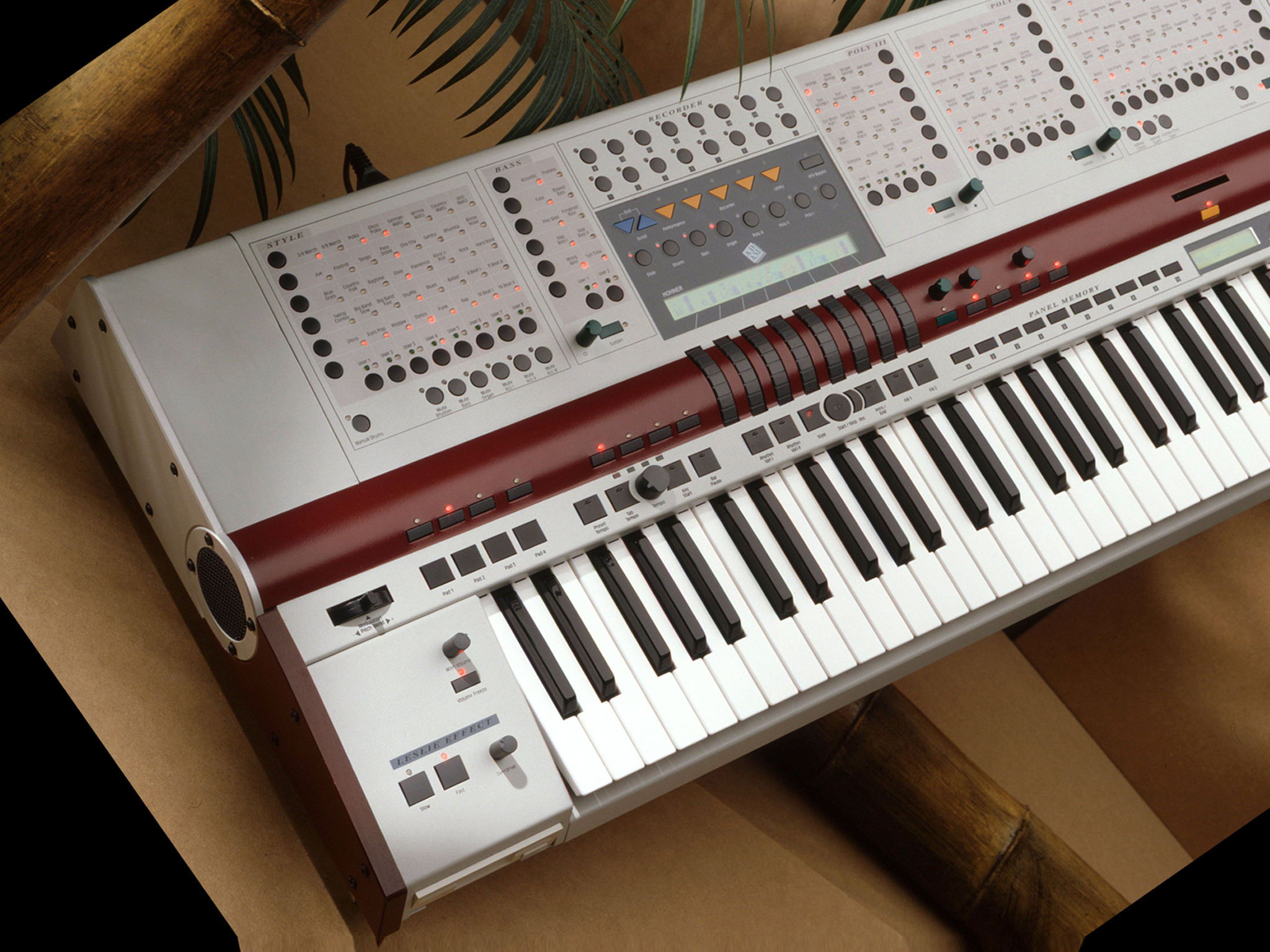
Hohner Adam
Waldorf Electronics collaborated with German company Hohner — long established as a maker of more traditional musical instruments — as a technical development partner to allow this instrument to capably compete as a solo entertainer keyboard against the likes of Roland, Solton, and Yamaha who dominated this market segment. EMC, internationally recognised for the outstanding quality of its MIDI playback disks, was brought on board as another ace up Hohner’s sleeve.
Drawing stylistically from the Wave, Adam also has a central control unit with eight control elements assigned to a wide display, though the haptic feel of its wheels are almost perfectly matched to that of traditional drawbars, alluding to an ‘organ’ at first sight. Specifically developed for Adam, the wheels also serve as universal input units with a click mechanism. All eight wheels sit on a common axis. The readout is handled by light barriers.
A central, dark red-coated tube fittingly integrates the wheels’ form and also serves as a bass reflex tube for the integrated sound system. In front of the tube, directly above the keyboard, all performance-relevant control elements are made easily accessible to the performer. All available rhythm and sound modules are lined up on the panel behind the tube. Each sound module is designed in the form of a matrix. Their selection is logically sorted by genre or sound group. The individual table contents are backed with slightly contrasting colours and support the targeted selection of a rhythm or sound. The different shapes and colours of the keys show functional connections.
The shaping of the tube for the full-metal housing was extremely complex, and I would certainly choose a different manufacturing method today — especially for this element. The end caps are designed as segmented units with the rear part consisting of a solid aluminium plate, which also contains the cover of the bass reflex tube, while the front part’s real wood application connects the active playing area of the keyboard with the more technical rear part.
The name and logo represents a new beginning for Hohner in the electronic musical instruments market segment, combining modernity and tradition while clearly standing out from the competition. The light basic colour of the casing had an independent and zeitgeist-like effect, while the dark red tube is reminiscent of the colour worlds of traditional instruments.


